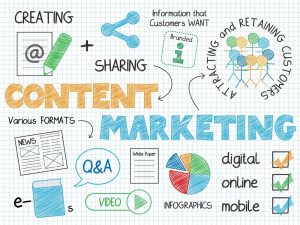Building a quality email list is crucial for any business that wants to succeed in the digital age. It’s a powerful way to communicate with your audience, promote your products or services, and build lasting relationships with your customers.
However, building quality email marketing lists is easier said than done. With so many distractions and competing messages, capturing your audience’s attention and getting them to sign up for your email list can be challenging.
That’s why we’ve put together this comprehensive guide to help you build a quality list fast. In this guide, we’ll share 20 tips that you can use to build a list of people that are engaged with your brand. Whether you’re a startup or an established business, these tips will help you build a quality email list that can grow your business and take your marketing efforts to the next level.
From offering valuable content to optimizing your website, there are countless strategies that you can use. Let’s dive into these tips and turn you into an email marketing specialist.
1 – Offer Valuable Content
Offering valuable content is one of the most effective ways to build a quality email list. People are more likely to give you their email address if they perceive that you’re offering something of value in return. Your content should be informative, educational, and relevant to your target audience.
By offering valuable content, you’re giving your audience a reason to sign up for your email list and stay engaged with your brand over time.
It’s important to note that your content should align with your brand and be relevant to your target audience. This means taking the time to research your audience’s needs, interests, and pain points and creating content that speaks directly to those areas.
When you offer valuable content that resonates with your audience, you’re more likely to build a quality email list that is engaged and responsive to your messaging.
2 – Use Lead Magnets
Lead magnets are a powerful tool for building quality email marketing lists. They are a type of incentive that you offer to your website visitors in exchange for their email addresses. The key to creating a successful lead magnet is providing something your audience finds valuable, relevant, and compelling.
There are many types of lead magnets that you can offer, depending on your industry and audience. Some popular examples include ebooks, whitepapers, checklists, templates, webinars, and free trials.
The important thing is to create a lead magnet that addresses a specific pain point or problem that your audience is facing, something that provides a solution or valuable insights.
When creating your lead magnet, it’s important to make it easy to access and consume. You want your audience to be able to access the lead magnet quickly and without any barriers so that they can begin to see the value that you offer. Depending on the format, you should also make sure that the lead magnet is visually appealing and easy to read or watch.
3 – Optimize Your Website
Optimizing your website is essential. Your website is often the first point of contact potential customers have with your brand, so you need to ensure that it’s optimized to capture their attention and encourage them to sign up for your email list.
One key element of website optimization is making sure your website is easy to navigate and use. Your website should be well-organized, with clear calls to action that guide visitors toward signing up for your email list. You should also ensure that your website loads quickly, as slow load times can cause visitors to leave your site before they sign up.
Another important element of website optimization is to use pop-ups to capture email addresses. Pop-ups are a great way to grab visitors’ attention and encourage them to sign up for your email list. However, using them strategically and sparingly is important, as too many pop-ups can be annoying and turn visitors away.
4 – Use Exit-Intent Pop-Ups
Exit intent pop-ups are somewhat different from standard pop-ups. These pop-ups are triggered when a visitor intends to leave your website, either by moving their cursor to the top of the page or clicking the back button. The purpose of exit intent pop-ups is to grab visitors’ attention and encourage them to sign up for your email list before leaving your site.
When designing your exit intent pop-up, it’s important to ensure it’s visually appealing and offers value to your visitors. You might offer a discount code, a free resource, or exclusive access to content only available to email subscribers.
You want to create an offer that’s compelling and relevant to your audience and provides a clear benefit for signing up for your email list.
5 – Use Social Media
By promoting your email list on social media, you can reach a wider audience and encourage more people to sign up for your list. There are several ways to use social media to build your email list.
One effective strategy is to create social media posts that promote your emails and encourage people to sign up. You might offer a free resource, exclusive content, or a special promotion for people who sign up. Make sure that your posts are visually appealing and clearly communicate the value of signing up for your list.
You can also use social media to promote your lead magnets and other content designed to attract email subscribers.
6 – Host Events
Hosting events can be a highly effective strategy for building an email list. By hosting events, you can attract new prospects, engage with them in person, and encourage them to sign up for your list to stay connected and receive future updates.
There are many types of events that you can host to build your email list, depending on your goals and target audience. You might host a webinar, a workshop, a networking event, or even a charity fundraiser. The key is to create an event that interests your audience and provides a clear benefit for attending.
When promoting your event, it’s important to make sure that you highlight the value of attending and the benefits of signing up for your email list. For example, you might offer a free resource or exclusive content for attendees who sign up for your email list or a discount on your products or services for attendees who sign up.
During the event, ensure you collect attendees’ email addresses and encourage them to sign up for your email list. You can provide a sign-up sheet or use a mobile app to collect email addresses on the spot. Make sure that you follow up with attendees after the event and provide them with additional resources and information about your brand.
7 – Network
Networking can also help you with your email list. Networking is a much slower way to collect emails, but the quality of these emails will be higher. In addition, by attending industry events, connecting with other professionals, and building relationships with potential customers, you can expand your reach and attract new subscribers to your email list.
One effective strategy for networking to build your list is to attend industry events and conferences. By attending these events, you can meet other professionals in your industry and connect with potential customers interested in your products or services.
Make sure that you have a clear pitch for your emails and communicate the value of signing up for your list to potential subscribers.
Another effective strategy is to use social networking platforms like LinkedIn to connect with other professionals in your industry. Building relationships with other professionals can expand your reach and attract new subscribers to your email list.
Make sure you have a strong profile highlighting the value of your email list and engaging with other professionals regularly to build relationships.
8 – Partner With Other Businesses
Partnering with other businesses can be an effective way to build a quality email list. By collaborating with other brands that share your target audience, you can tap into their existing network and attract new subscribers to your email list.
If it works for your business, you could partner with other businesses to host a joint webinar or event. By co-hosting an event with another brand, you can leverage their existing network and attract new subscribers to your email list. Make sure that you communicate the value of signing up for your email list to event attendees and provide a clear benefit for attending.
Another effective strategy is collaborating with other brands on a joint content marketing campaign. By creating high-quality content that’s relevant to your target audience, you can attract new subscribers to your email list and build relationships with potential customers.
Make sure that you promote your email list prominently in your content and that you provide a clear benefit for signing up.
9 – Use Paid Advertising
By leveraging the targeting capabilities of platforms like Facebook Ads or Google Ads, you can reach a highly relevant audience and attract new subscribers to your email list.
You can use paid social media ads to promote your email list to a highly targeted audience. Platforms like Facebook Ads and LinkedIn Ads allow you to target specific demographics, interests, and behaviors. So you can reach the people most likely to be interested in your brand and sign up for your email list.
If you are using a lead magnet, make sure that you promote it prominently in your advertising copy. If you don’t have experience with paid advertising, an email marketing agency could help you with that.
10 – Use Retargeting
This point ties into the last. By targeting people who have already visited your website or engaged with your brand, you can increase the likelihood that they’ll sign up for your email list.
We recommend creating a dedicated landing page designed to convert visitors into subscribers. Make sure that your landing page is optimized for conversion, with a clear and compelling headline, persuasive copy, and a prominent call-to-action that encourages visitors to sign up for your email list.
Once you have a dedicated landing page, you can use retargeting ads to drive traffic to your landing page and encourage people to sign up for your email list. Make sure that your ads are targeted to people who have already visited your website or engaged with your brand and that your ad copy and imagery are compelling and persuasive.
11 – Encourage Referrals
When your existing subscribers refer their friends and family to your email list, you can quickly expand your audience and build a list of engaged and interested subscribers.
One effective way to encourage referrals is to offer a referral incentive or reward. This can be something as simple as a discount or freebie or something more valuable like a gift card or exclusive access to a product or service.
Make sure that the reward is something your audience will enjoy and that it’s easy for your subscribers to share your email list with their friends and family.
12 – Use Incentives
Incentives (similar to lead magnets) are rewards or benefits that you offer to people in exchange for their email addresses, and they can be a great way to motivate people to sign up for your list and engage with your brand.
One effective incentive is to offer a discount or coupon code to new subscribers. This can be a percentage off their first purchase or a special offer only available to people who sign up for your email list. Your discount should be valuable, relevant to your audience, and easy for people to redeem and use.
13 – Encourage Word of Mouth
Encourage people to share what they’re reading in your emails with friends and family! For this to work, you’ll need to make sure that the content of your emails provides value to the reader.
We know word of mouth isn’t a trackable thing like most items on this list, but it’s a fantastic way to build your brand and get people to act.
14 – Offer Exclusive Content
In addition to having your content be valuable, you could consider offering exclusive content. Here are some ideas:
-Create a members-only section on your website: Creating a members-only section on your website can also be a powerful way to offer exclusive content to your email subscribers. You can provide access to exclusive articles, videos, or other types of content that are only available to your subscribers.
-Provide early access to new products or services: You can also offer your email subscribers early access to new products or services before they are available to the general public. This can build excitement and anticipation around your brand and incentivize people to sign up for your email list.
-Host exclusive webinars or events: Hosting exclusive webinars or events for your email subscribers can also be a powerful way to offer exclusive content. You can provide valuable information, answer questions, and provide networking opportunities only available to your email subscribers.
15 – Use Opt-In Forms
Opt-in forms allow users to sign up to receive your email content voluntarily. Here are a few ways to use opt-in forms effectively:
-Place your opt-in form in a prominent location on your website: One of the most important aspects of using opt-in forms effectively is making sure they are visible and easily accessible. You can place opt-in forms in a prominent location on your website, such as in the header or sidebar, to increase visibility and encourage sign-ups.
-Use a compelling call-to-action: A call-to-action is a statement that encourages users to take a specific action. For example, to increase sign-ups, you should use a compelling call-to-action that clearly communicates the value of your email content and encourages users to sign up.
-Offer a lead magnet: As we mentioned, lead magnets are valuable resources you offer users in exchange for their email addresses. Offering a lead magnet can be a powerful way to increase sign-ups and build a quality email list.
-Use targeted opt-in forms: Targeted opt-in forms are customized based on user behavior or interests. For example, if a user is browsing a specific product page on your website, you can display an opt-in form tailored to that product.
Once You Have an Email List, How do You Keep People Engaged?
Congratulations! You’ve successfully built a quality email list. But the work doesn’t stop there.
Once you have a list of subscribers, keeping them engaged and interested in your brand is just as important. After all, what good is a list of subscribers if they aren’t opening your emails or engaging with your content?
In this second half of the blog, we’ll continue to turn you into an email marketing specialist by discussing how to keep your email list engaged and excited to hear from you.
Use Email Automation
By setting up automated email campaigns, you can create personalized messages triggered by specific actions or events, like a subscriber signing up for your list or making a purchase.
This saves you time and ensures that your subscribers receive the right message at the right time.
And the best part? Email automation doesn’t have to be complicated or time-consuming. With the right tools and strategies, you can set up automated campaigns that run like clockwork, leaving you more time to focus on other aspects of your business. If you’re unsure how to set up automation, talk to an email marketing agency to see how they could help.
Segment Your Email List
Segmenting your email list is like dividing your wardrobe into different categories: work clothes, gym clothes, formal wear, and so on. Organizing your clothes this way lets you quickly and easily find what you need for any occasion. The same goes for your email list.
By segmenting your subscribers based on their interests, behaviors, and preferences, you can tailor your messages to their specific needs and create more relevant and engaging content.
For example, you could segment your list based on geographic location, purchasing history, or engagement level. This allows you to send targeted messages more likely to resonate with each segment.
If you have a sale going on in a certain area, you can send a message to only those subscribers who live in that area. Or if you have a new product similar to one they’ve purchased in the past, you can send a personalized message recommending it to them.
Segmenting your email list not only helps keep your subscribers engaged but also helps improve your email metrics, such as open rates, click-through rates, and conversion rates. When subscribers receive relevant and valuable messages, they’re more likely to take action and become loyal customers.
So don’t just send the same message to everyone on your list. Instead, take the time to segment your subscribers and create targeted campaigns that speak directly to their interests and needs. Your subscribers will thank you for it, and you’ll see the results in your email metrics!
Use A/B Testing
AB testing, also known as split testing, is a great way to improve your email marketing results. The concept is simple: you create two versions of the same email, with a small variation in one element, such as the subject line, call-to-action, or image. You then send each version to a small segment of your email list and compare the results to see which version performed better. You can then use the winning version to send to the rest of your list.
AB testing allows you to make data-driven decisions about your email marketing strategy. By testing different elements, you can see what resonates best with your audience and optimize your campaigns for maximum engagement and conversions.
For example, you could test different subject lines to see which ones result in higher open rates or test different call-to-actions to see which ones result in more clicks.
When conducting AB tests, it’s important only to test one element at a time to isolate the impact of that particular element. You should also ensure that your test group is statistically significant, meaning it’s large enough to generate meaningful results.
By regularly conducting AB tests, you can continuously improve your email marketing strategy and keep your subscribers engaged. So don’t be afraid to experiment and try new things – you never know what might work best for your audience until you try.
Provide Value in Every Email
We talked a lot already about providing value to help you build your list, but providing value in every email you send is extremely important for maintaining that list. This means not only sending valuable content but also making sure that every email serves a purpose and provides a benefit to your subscribers.
To ensure that your emails provide value, you must clearly understand your audience and what they want to receive from you. This could be educational content, exclusive offers, behind-the-scenes glimpses of your business, or something else entirely. Whatever it is, make sure that each email you send aligns with your subscribers’ interests and needs.
Consistency is also key when it comes to providing value in every email. Your subscribers should come to expect a certain level of quality and relevance from your emails, and you should strive to meet or exceed those expectations with every send. This doesn’t mean that every email needs to be a masterpiece – sometimes a simple, personalized message can be just as effective – but it does mean that you should put thought and effort into each email you send.
Finally, don’t be afraid to mix things up and try new things in your emails. Experiment with different formats like videos, quizzes, or polls to see what resonates best with your audience. And always be on the lookout for new ways to provide value and engage your subscribers.
Track Performance
Being able to track performance effectively is the true mark of an email marketing specialist. Tracking the performance of your email campaigns will be crucial to the overall success of your email marketing efforts. It will allow you to see what’s working and what’s not and make adjustments accordingly to improve your results.
One key metric to track is your email open rate. This measures the percentage of subscribers who actually open your emails. A low open rate could indicate that your subject lines need to be more engaging or that your subscribers are simply not interested in the content you’re sending. Experiment with different subject lines to see what resonates best with your audience, and make sure that your emails are providing value and aligning with your subscribers’ interests.
Another important metric to track is your click-through rate, which measures the percentage of subscribers who click on links within your emails. This can give you insight into which types of content and offers resonate best with your audience and can help you refine your messaging and calls to action.
You should also track your unsubscribe rate, which measures the percentage of subscribers who opt out of receiving your emails. A high unsubscribe rate could be an indication that your content is not meeting the expectations of your subscribers or that you’re sending too many emails. Make sure that you’re providing value and not bombarding your subscribers with too many messages.
Finally, remember to track your overall ROI from your email list. This will help you determine the effectiveness of your email marketing efforts and can guide your budget and resource allocation in the future.
Take Your Email Marketing to the Next Level With Revity
At Revity Marketing, we understand the importance of email marketing and have the expertise to help you take advantage of it.
Our team can assist you with all aspects of email marketing, from creating lead magnets and opt-in forms to designing engaging emails and setting up automation sequences.
But we’re not just an email marketing agency – we offer a full suite of marketing services, including web development, PPC advertising, SEO, and more. Our goal is to help you achieve your marketing objectives and drive growth for your business. Contact us today here or call us at 801-509-9675 to learn more about how we can help you succeed.
































